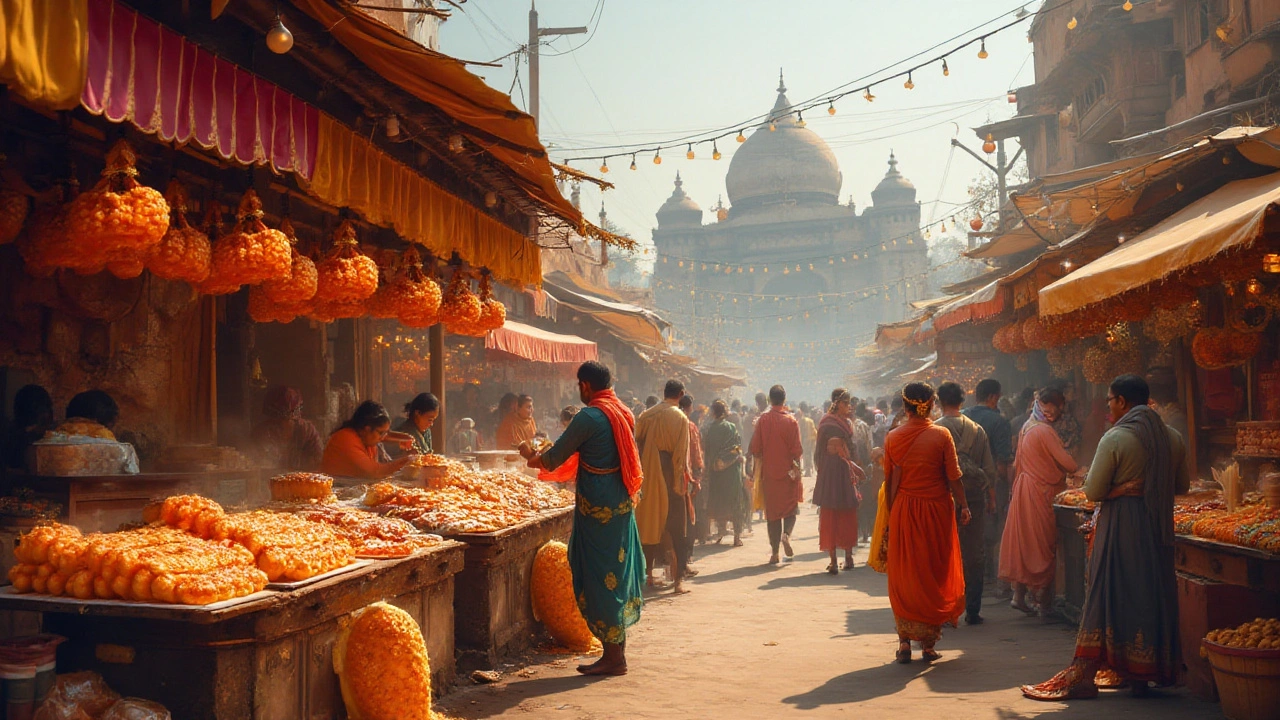Ancient Desserts: A Journey Through India's Sweet History
When talking about ancient desserts, the sweet treats that have survived centuries of cultural change in India. Also known as heritage sweets, they reflect regional festivals, royal kitchens, and religious rituals. These desserts are a subset of traditional Indian sweets, confections that rely on time‑tested methods and local ingredients. Key players like saffron, the pricey crimson spice that adds aroma and color and ghee, clarified butter that gives richness and a buttery mouthfeel are essential for the authentic taste. Ancient desserts encompass regional sweets, require traditional ingredients, and historical recipes influence modern Indian desserts. Understanding these links helps you appreciate why a simple piece of payasam can feel like a cultural time capsule.
Regional Flavors and Historical Roots
India’s vast geography means each state developed its own sweet identity. In the north, kesar pista halwa, a saffron‑infused, pistachio‑laden dessert, traces back to Mughal courts. Down south, payasam, a rice‑based pudding sweetened with jaggery, was first offered in temple rituals. The western coast favors modak, steamed rice flour dumplings stuffed with coconut‑jaggery filling, tied to Lord Ganesha worship. Eastern Bengal’s rosogolla, soft cheese balls soaked in sugar syrup, emerged during colonial trade. These examples show how ancient desserts act as culinary maps, each point linking a region’s history, religious practice, or trade influence. The core ingredients—jaggery, milk, nuts, and spices—remain steady, but preparation methods like slow‑cooking, steaming, and syrup‑soaking vary, creating distinct textures and flavors. Recognizing these patterns lets you see how a dish like gujiya from Uttar Pradesh shares technique with puran poli from Maharashtra, despite different fillings, because both rely on dough‑encased sweet cores.
Today, home cooks and chefs are reviving these age‑old treats with modern twists while respecting the original spirit. Using pantry staples like powdered milk instead of fresh milk can speed up the process, but the goal stays the same: honor the lineage of flavors. You’ll find tips on achieving the perfect glossy syrup without over‑cooking, ways to balance saffron’s bitterness with a pinch of cardamom, and shortcuts for rendering ghee at home without losing aroma. The collection below pulls together articles that dive deep into ingredient science, regional sweet histories, and step‑by‑step guides—from how lemon brightens biryani to why paan‑flavored desserts are making a comeback. Browse the posts to uncover the stories behind each sweet, learn practical hacks, and start your own journey of recreating India’s ancient desserts in the modern kitchen.

Discovering India's Ancient Sweets: Tracing the Oldest Delicacies
Embark on a journey through India's culinary past to uncover the mysteries of its oldest sweet dish. This article delves into the rich tapestry of traditional Indian desserts, highlighting their cultural significance and evolution over centuries. You will discover fascinating stories behind these mouth-watering delights and learn how ancient recipes have withstood the test of time. From ancient texts to modern kitchens, this exploration provides a delicious insight into the sweets that have sweetened the Indian palate for generations.